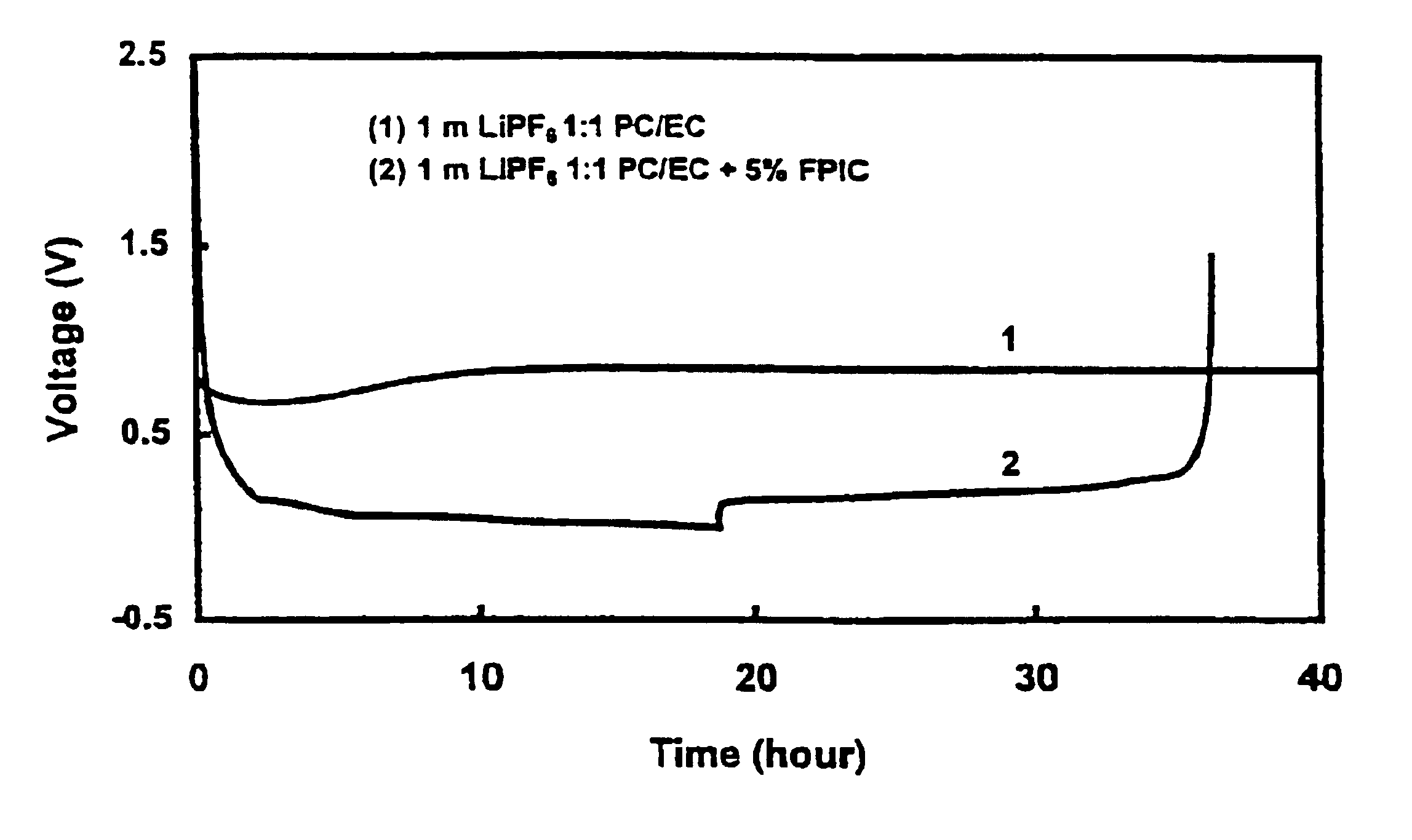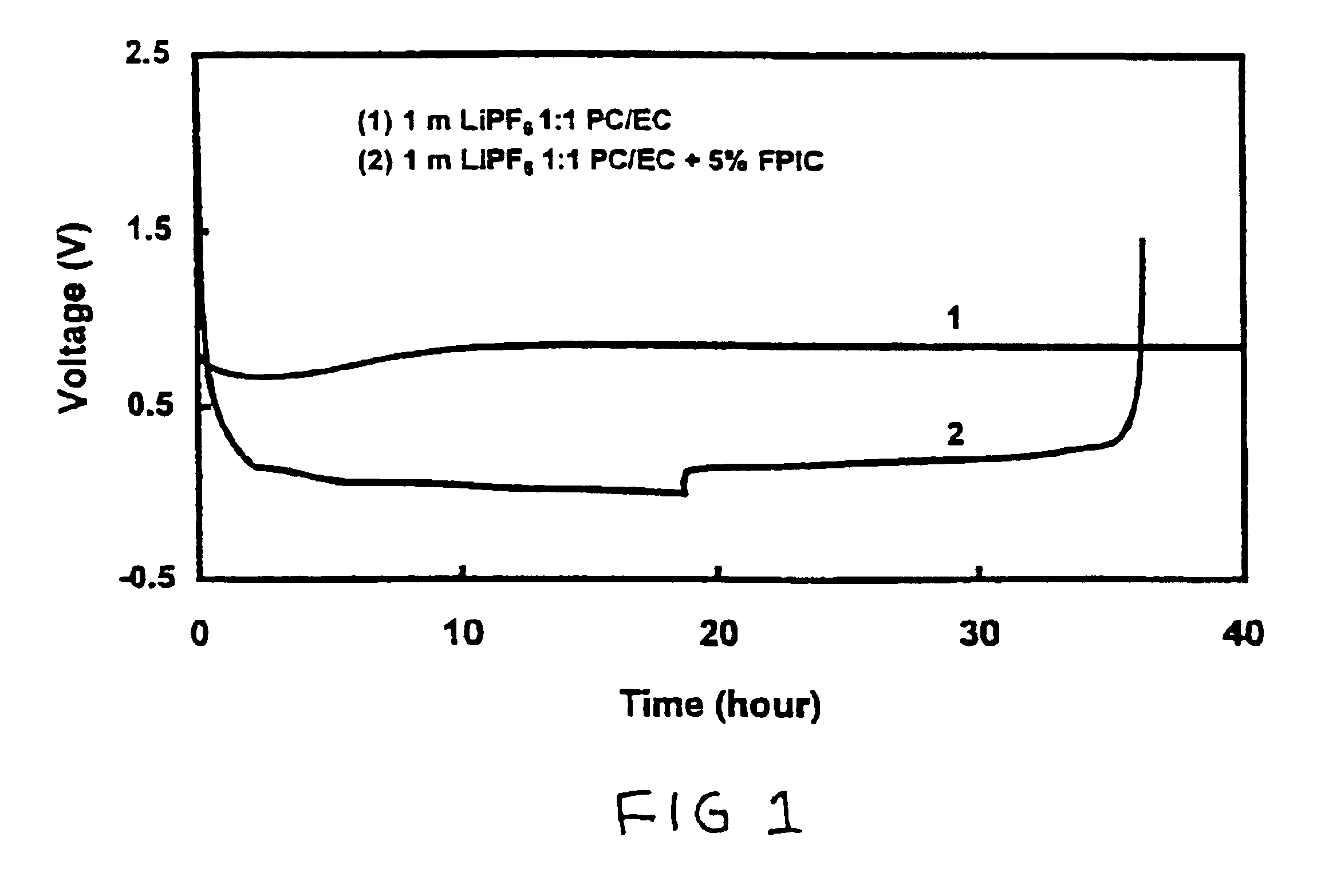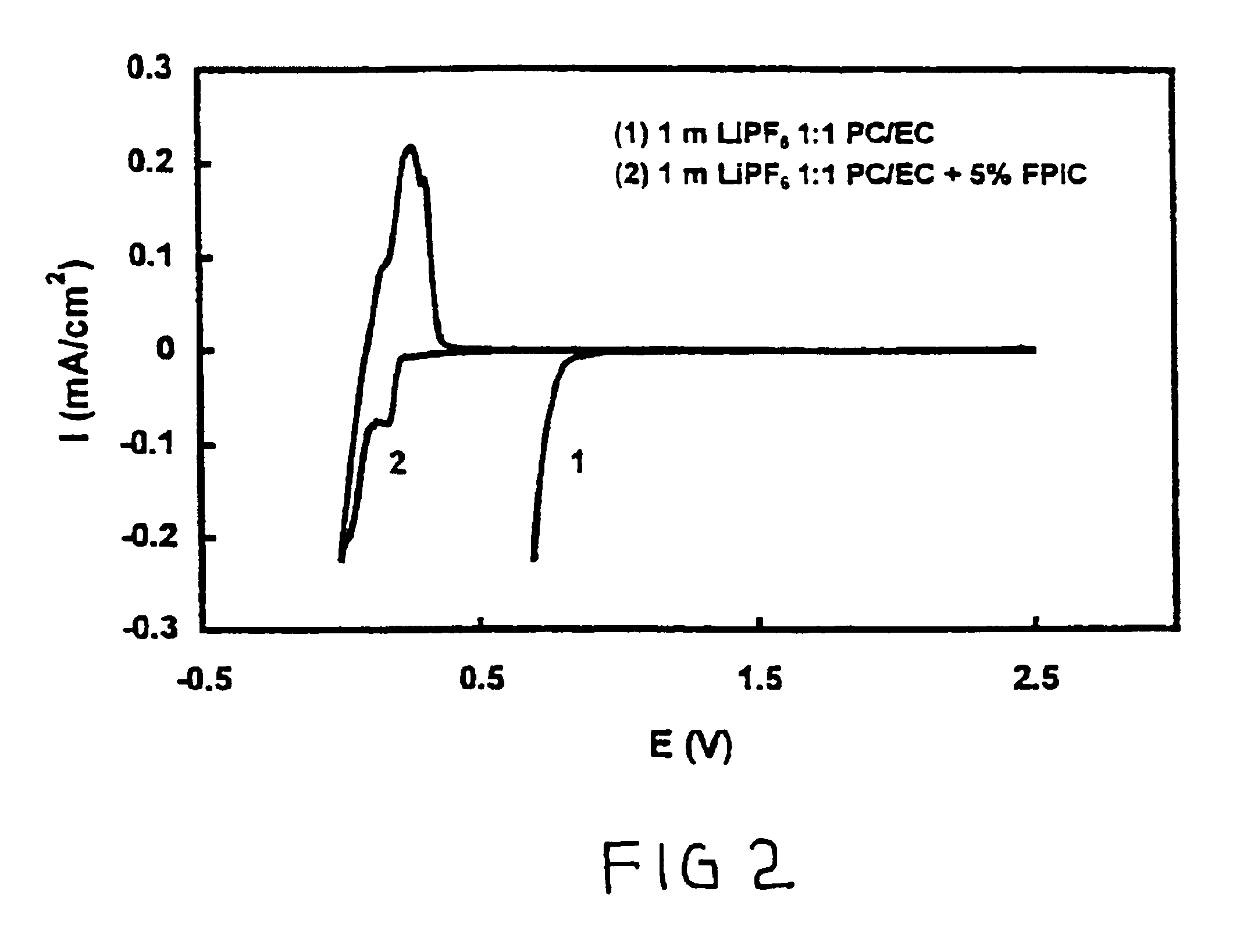Non-aqueous electrolyte solutions comprising additives and non-aqueous electrolyte cells comprising the same
a technology of additives and electrolyte cells, which is applied in the direction of non-aqueous electrolyte cells, secondary cells, servicing/maintenance of secondary cells, etc., can solve the problems of short circuit of cells, shorten the life and performance of batteries, and pc is not a preferred solvent, so as to improve the ability of protecting electrodes, prolong the service life, and improve the effect of protection
- Summary
- Abstract
- Description
- Claims
- Application Information
AI Technical Summary
Benefits of technology
Problems solved by technology
Method used
Image
Examples
example 1
Effect of 4-Fluorophenyl Isocyanate (FPIC) on Stability of 1 m LiPF6 / PC-EC (1:1 wt Ratio) Electrolyte Versus Graphite
[0042]Two Li / graphite cells with an electrode area of 6 cm2 were assembled. One cell was filled with 1 m LiPF6 / PC-EC (1:1 wt ratio) electrolyte, and the other one was filled with the same electrolyte but containing 5 wt % of FPIC. Both cells were carried out a discharge-charge cycling test between 0.002 V and 1.0 V at a constant current density of 0.093 mA / cm2. FIG. 1 shows voltages of these two cells versus the experimental time. The cell using 1 m LiPF6 / PC-EC (1:1 wt ratio) electrolyte (shown as line 1) could not discharge to below 0.8 V due to decomposition of PC solvents. In comparison, the cell using the same electrolyte with 5 wt % of FPIC (line 2) completed a reversible discharge-charge cycle with a columbic efficiency of 94%. Thus indicating that FPIC protects PC from decomposition on a graphite electrode.
example 2
Cyclic Voltammograms of 1 m LiPF6 / PC-EC (1:1 wt Ratio) Electrolytes Without and with 4-fluorophenyl Isocyanate
[0043]Two identical Li / graphite cells as described in example 1 were assembled. The stability of the electrolytes was tested using a cyclic voltammetry technique at a scanning rate of 0.01 mV / s between 2.5 V and 0 V. Cyclic voltammograms of these two cells are shown in FIG. 2. An increase in cathodic current was observed when the voltage was scanned from 2.5 to about 0.95 V versus Li+ / Li in 1 m LiPF6 / PC-EC electrolyte. The experiment was terminated at around 0.7 V because the cathodic current was increased continuously without the appearance of a peak. The cell using 1 m LiPF6 / PC-EC electrolyte with 5 wt % of FPIC (line 2) displayed a pair of reduction-oxidization current peaks with a coulomb efficiency of 97%. The current reduction peak and the oxidation current peak indicate, respectively, the intercalation of Li ions into graphite and the de-intercalation of Li ions out o...
example 3
Cycling Performance of Graphite / LixNi0.8Co0.2O2 Cells Using 1 m LiPF6 / PC-EC (1:1 wt Ratio) Electrolyte Without or with 5% of FPIC
[0044]Two graphite / LixNi0.8Co0.2O2 button cells with an electrode area of 1.27 cm2 were assembled. 1 m LiPF6 / PC-EC (1:1 wt ratio) electrolyte was added to both cells, and 5 wt % of FPIC was also added to one of the two cells. Both cells were then tested under a constant current charge and discharge cycle between 3.9 and 2.5 V. The current density used was 0.3 mA / cm2 (after the first cycle, in which the current density was 0.093 mA / cm2). The cell including only 1 m LiPF6 / PC-EC (1:1 wt ratio) electrolyte could not be charged to 3.0 V. This means that because the carbonaceous anode could not be charged in this electrolyte as shown in FIG. 1 of Example 1. The cell using 1 m LiPF6 / PC-EC (1:1 wt ratio) electrolyte with 5 wt % of FPIC was able to be cycled with good capacity retention as shown in FIG. 3. This example indicates that graphite / LixNi0.8Co0.2O2 cell i...
PUM
 Login to View More
Login to View More Abstract
Description
Claims
Application Information
 Login to View More
Login to View More - R&D
- Intellectual Property
- Life Sciences
- Materials
- Tech Scout
- Unparalleled Data Quality
- Higher Quality Content
- 60% Fewer Hallucinations
Browse by: Latest US Patents, China's latest patents, Technical Efficacy Thesaurus, Application Domain, Technology Topic, Popular Technical Reports.
© 2025 PatSnap. All rights reserved.Legal|Privacy policy|Modern Slavery Act Transparency Statement|Sitemap|About US| Contact US: help@patsnap.com



